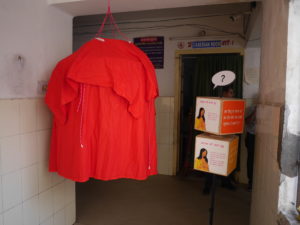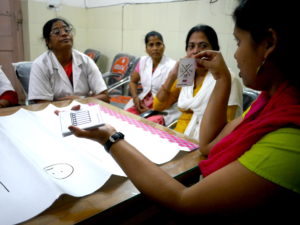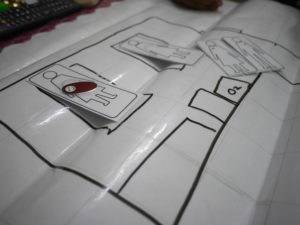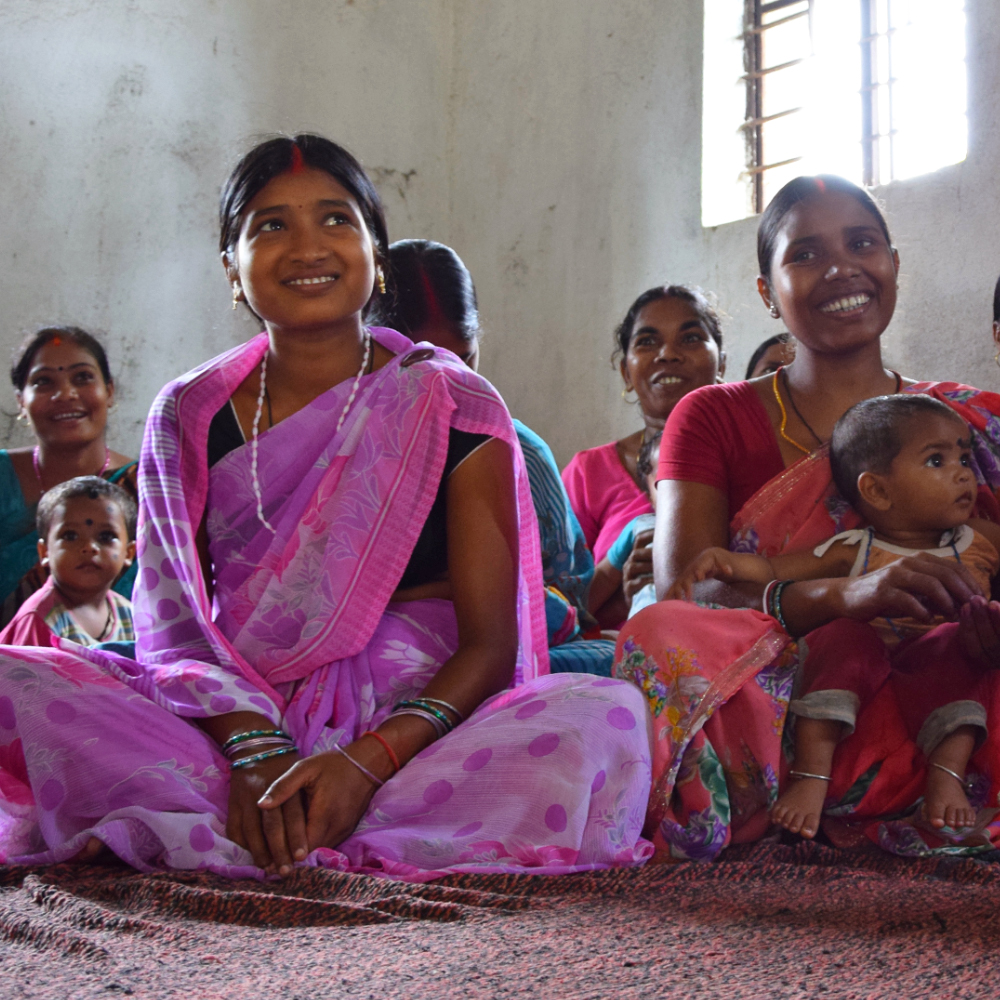Testing, testing… M4ID tries out new tools for improving birth experience in India
“Wait a second – I waited 9 months for this? – For a baby, being born can be uncomfortable.”
Project lead Nicolas Von Flittner has been working with the Lab.Our Ward project for three years. Trying to get inside a newborn baby’s mind is a part of his job.
“You have spent months in a warm and comfortable space. Suddenly you are pulled into bright lights, loud noises and cold air.”

The Lab.Our Ward team tested new tools in October. The Red Curtain booth was intended as an immersive experience, where people could step in, and learn about the ideal delivery journey. People could also experience what it’s like for a baby to first be inside a womb, and then to come out.
The project aims to to improve birth facilities and related healthcare practices in low-resource settings. The team wants to make the experience safer and more comfortable for the baby and the mother.
“For us, this has been an exploration, of what happens in the birth journey, what services and applications exist to aid the start of a new life. We wanted to identify gaps and bring solutions to them through service and product design.”
Flittner says that the area of work is well-researched, but there is still work to be done.
– “The field is full of innovation, but in practice, the solutions don’t always make it to the end user. We know what should be done, but often in practice this doesn’t happen. We wanted to know, why not – and what we could do to help.”
Last month, the team travelled to the state of Bihar in India to test new prototype equipment, including a fabric booth called “Red Curtain”, boxes attached to a pole, a card game and different mobile applications.
So, what was that about?
Mother is the best machine
“What we have learnt, is that often very small changes can make a big difference for the outcome”, Flittner explains.
Through combining information and recommendations from the World Health Organisation and other organisations working in the field of maternal and newborn health, the team listed best practice guidelines for delivery, Flittner tells.
“They included preventing infections, performing a quick assessment for mother and baby right after the birth, delayed umbilical cord clamping, keeping the mom and the baby together, initiating early breastfeeding and skin-to-skin contact, minimising the non-medical work and including the companion in the process. From these guidelines, we created an ideal eight-step delivery journey.”

One of the tools was a board game with cards.
This is not an impossible list to follow, he explains.
– “The guidelines are not expensive to implement, so they are realistic, even when resources are scarce. The problem is, that best practices are often not followed in the daily life, as they are not customised for that particular setting. The guidelines can sometimes be developed separately from the practical work, but in our view, we need to work to understand context, and to take the customs and wider context into account. Cultural practices can have a big impact in different ways.”
Flittner emphasises that the project is not trying to reinvent the wheel. “We often say, that ‘The mother is the best machine’. So we don’t try to fix what isn’t broken, but to fine tune the existing structures and practices, so that they would work better.”
Knowing, what should be done, Lab.Our Ward team set find out, what would be the best way of conveying the information, and how medical staff, the mothers and their companions could be best reached. In October, the team created a number of concepts for tools, which could be used and displayed within medical facilities.
Testing testing
For the testing phase, the team decided that it would be best to get first hand experience from the health care professionals themselves, in a real-life hospital. They decided to go to India.
“We wanted to try the tools out in Bihar, a state, which has a dire need for maternal and child health services, and where we also had a great partner to work with”, Flittner tells.
“In Bihar, poverty is a big problem, and maternal and child mortality rates are higher than the national Indian average. We were lucky to partner with Care India, who have vast experience with working in the state to improve the clinical work in different facilities. Their medical expert Niraj Kumar attended our design sprint, and the NGO also assisted us with the testing.”
The tools developed for the testing phase all had a different purpose.
A board game with a deck of cards was used as a discussion aid to ask the right questions and gain valuable information from the staff about their work. “We created the game to assess, what kind of working methods are used in the facility, which resources they have, what they are lacking and how they have organised for example the privacy of the patients.”
It was also important to understand how the space was organized, and where everything was located.
“We made a drawing of the built environment, to map the labour ward together with nurses. We wanted to see, where the mothers’ beds were located, where the essential equipment was stored, and so on.”

Drawing the space helped the medical staff see, how the delivery ward was organised and if workflow could be improved.
Flittner explains that through this exercise, the staff could think about how to rearrange the space so as to enhance ergonomics and workflow and to prevent infections and other risks.
“As a result, the staff for example decided to move some equipment closer to the centre of the ward, so that it would be quicker to access.”
The cubes and the booth were installed in the corridors, displaying information about the best practices.
“The leading principle behind our work was to try out learning-by-doing methods. We thought that interactive tools, such as the Red Curtain, booth, where people could walk in, and the boxes which people could move, would work better than static materials, such as posters. We displayed information in a question-and-answer format. By moving the boxes, the user could match the right answer to each question. We asked the staff, mothers-to-be and their families to test them.”
In addition, the team tested a set of mobile applications for information sharing.
Next up: Nigeria
The learnings from India were collected, and next, the team will take the equipment to Nigeria.
“We will re-run the tests in another setting, so that we can get more information, before making our decisions on how to revise the designs”, Flittner tells.
“In the end, the aim is to build a set of solutions for a database, which any actor in the field is able to access and utilise, including service, product and space design solutions”.
“The booth and the game might not be the final form of the solutions we will develop, but through the testing, we will gather valuable information on how people engage with different tools, and how they absorb information in a hospital or health centre setting.”
Stay tuned to hear more about the designs-to-be!
Photos: Rose Matthews.
Back to news